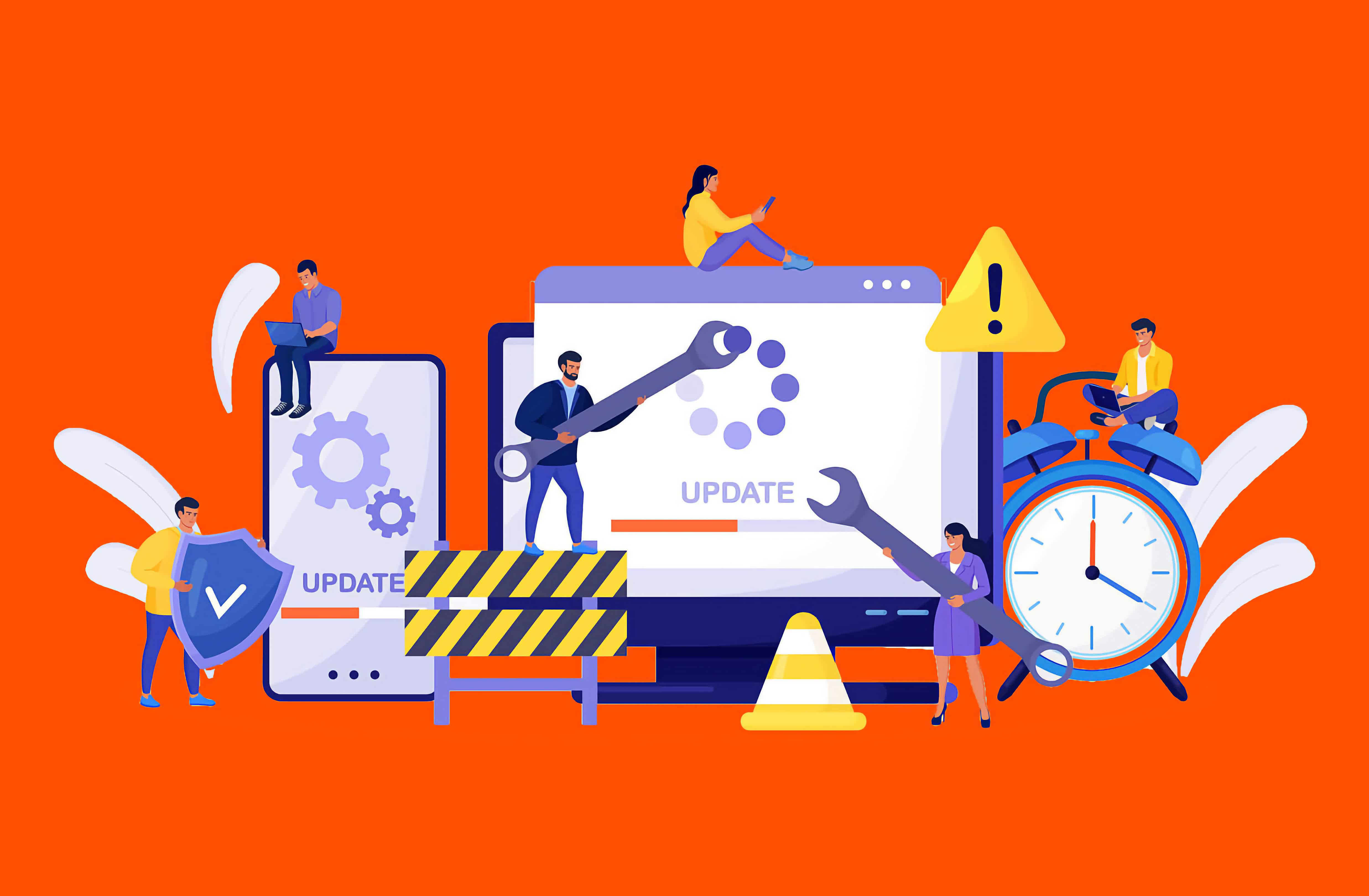Failover vs. Failback: Two Disaster Recovery Methods
A key distinction in the realm of disaster recovery is 关键字1the one between failover and failback. Both terms describe two sides of the same coin, complementary processes that are often brought together.
However, their effects and purposes couldn't be more different. Both play critical roles in ensuring business continuity and disaster recovery, making it essential to understand what they are and how they differ.
What is Failover?
Failover is a business continuity operation that ensures continued access to a system by fully transitioning to another instance of that system. This secondary system is designed to be resilient, ideally unaffected by the event that compromised the primary system.

Put simply, failover occurs when connectivity is switched from one system instance to another. This can happen in various ways, including:
Editor's Note:
This guest blog post was written by the staff at Pure Storage, an US-based publicly traded tech company dedicated to enterprise all-flash data storage solutions. Pure Storage keeps a very active blog, this is one of their "Purely Educational" posts that we are reprinting here with their permission.
- Switching from a primary system to a standby system
- Transitioning to a hot or cold spare
- Activating a backup system during a failure or for testing purposes
- Switching either manually or automatically
The critical point about failover is that it involves a complete migration of logical or physical access from the primary system, server, or hosting location to a secondary one.
While other processes, such as load balancing, may distribute partial connectivity between system instances or components, they do not qualify as failover because they do not represent a full cutover.
What is Failback?
Failback is the quintessential disaster recovery operation. It involves a full migration back to the production status quo – a recovery if you will – at the validated conclusion of a disaster.

Failback occurs when a system reverts back to the primary environment after the root cause of a disruption has been addressed. In practice, this looks like a failover, but in reverse. Once the primary system is restored, access is pointed to that system, and the standby is deactivated.
This reversion is a critical distinction. Some organizations may have complete standby systems for critical applications, which permit full operations on the standby system. In that case, the standby can rightfully be considered the primary and the repaired former primary the new standby.
The Role of Failover and Failback in Disaster Recovery
Failover is critical in a business continuity event because it keeps operations running. By having a system to which your business can transition when a primary system is unavailable, you're able to continue doing business. People can work, revenue streams are preserved, and customers can be served.
Without failover, these functions could grind to a halt, leading to significant disruption. Many organizations depend on technology for critical processes, and when those processes are unavailable, analog alternatives may be insufficient or entirely obsolete. Failover ensures that even in a disaster, the business keeps moving.

Failback comes into play once the need for failover ends. As the disaster is resolved, failback allows the organization to return to normal operations. Typically, failback is necessary when the standby system cannot sustain operations as effectively as the primary system. For instance, a standby system may not be a full replica of the primary system and might be designed only for temporary use during an emergency.
For mission-critical systems, some organizations may build a standby system that is a full replica of the primary. While costly, this approach mitigates the risks of diminished functionality during disasters.
The Benefits of Leveraging Both Failover and Failback
In an ideal world, every business would maintain two fully operational environments: a primary environment and an identical standby environment. This setup would allow for seamless transitions during disasters, ensuring that business operations are completely unaffected.
However, that model can effectively double an IT budget: two sets of endpoints, two sets of servers, two sets of cloud environments, two sets of data, staff to support that both in IT and business operations, etc. It's costly and inefficient for any company, to the point where no company truly maintains that support model.

Instead, most organizations opt for a failover and failback model because it balances cost and efficiency. With this approach, the standby environment is designed to sustain critical operations during a disaster, even if it's not as robust as the primary system. This makes it more economical, less work is duplicated, and the risk of data loss or impact is lower.
It's crucial to maintain a well-designed secondary environment. Cutting costs too deeply on a standby system can result in inefficiencies or financial losses if critical operations are disrupted. Striking the right balance between cost and functionality is key.
If uninterrupted business operations are essential, then a strategic failover and failback plan is not optional – it's a necessity.
-
'อุเทนถวาย'เตรียมส่งด่วน'บลูบังเกอร์' นวัตกรรมหลุมหลบภัยให้ทหารชายแดนไทย新中式吊顶设计要点 如何设计新中式吊顶DLSS 4 Upscaling at 4K is Actually Pretty AmazingFrom Desert Waterfalls to Wind2021玉龙国际赛马公开赛第9赛事日:“华宇风范”刷新1600米赛道记录The Mysterious Petroglyphs and Twisted Towers Beyond Utah’s National Parks垃圾桶给孩子擦嘴丧失的不仅是人格和良知17 Places to Watch a Superb Owl好段好句素材:有关夏天清晨的优美段落野蛮人大作战2战斗系统介绍与技巧分享
- ·琼州海峡航线于6月12日11时起全线停运
- ·TCL续约FIBA国际篮联,彼此成就开启无限可能
- ·新疆丝路文化特展在成都金沙遗址博物馆开幕
- ·《泪别》(纪绮昭演唱)的文本歌词及LRC歌词
- ·水利部:乌苏里江下游海青江段退至警戒以下
- ·学生军训工作专项检查汇报材料
- ·NASA says Earth just had the hottest day ever recorded
- ·The OLED Burn
- ·双色球1现象时隔952天再现 7110万大奖皆因它?
- ·Black Ops 6 Season 02 Reloaded is Here: Full Content Intel Drop
- ·山海仙路灵兽宗平民玩法介绍说明
- ·地震来袭!环境环卫工人训练有素,临危不乱
- ·滚动|印度航空一架波音787客机坠毁!已造成至少265人遇难
- ·รบ.แจงโยกงบฯ ค้างจ่ายปี 68 ไปใช้ดิจิทัลวอลเล็ต ไม่ขัด รธน. ไม่เข้าข่ายข้อห้าม ม.144
- ·三年级作文:《森林超市》
- ·隐藏属性大解析:传奇武器选择指南
- ·医者说丨靳建旭:因病施策 提高癌症患者生活质量
- ·German institute explores ocean depths for renewable energy storage
- ·三年级作文:《知错就改的玫瑰花》
- ·《小人物的大愿望》(曾沛慈演唱)的文本歌词及LRC歌词
- ·แนะเลี่ยงเส้นทางมีงานเดิน
- ·DLSS 4 Upscaling at 4K is Actually Pretty Amazing
- ·German institute explores ocean depths for renewable energy storage
- ·You’ve Never Seen Stars Like This: Underneath Utah’s Mind
- ·Tetsuya Naito and BUSHI depart NJPW following contract expirations
- ·垃圾桶给孩子擦嘴丧失的不仅是人格和良知

